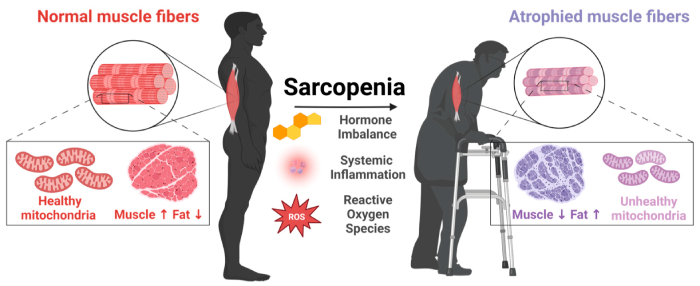Exploring the Metabolic Effects of Flavonoids and Topiramate on Liver Health
Metabolic dysfunction-associated steatotic liver disease (MASLD) remains a significant health challenge with limited treatment options. Recent research has turned its focus to flavonoids and topiramate, compounds traditionally studied for weight loss, to explore their potential effects on liver metabolism. This study delves into their impact on glucose metabolic carbon flux in a cell culture model of steatosis, offering promising insights into their therapeutic potential.
Study Design and Methodology
The study utilized HepG2 cells, a model for human liver cells, to induce steatosis through exposure to oleic acid (OA) conjugated to bovine serum albumin. The cells were then treated with either dimethyl sulfoxide (DMSO) as a control, or one of four compounds: naringenin, morin, silibinin, or topiramate. A stable isotope tracer, 50% U13C-glucose, was added to the medium to track metabolic pathways. The cells were analyzed after 72 hours of treatment using gas chromatography/mass spectrometry and mass isotopomer distribution analysis to assess various metabolic activities, including glycogen synthesis, de novo fatty acid synthesis, tricarboxylic acid (TCA) cycle activity, and ribose synthesis.
Key Findings
1. Lipid Accumulation and De Novo Synthesis: Compared to untreated controls, OA-exposed steatotic cells showed a 1.6-fold increase in lipid accumulation, as measured by Oil Red O (ORO) staining. This was accompanied by enhanced palmitate de novo synthesis, a key process in fatty acid production.
2. Impact of Treatments:
– Topiramate and Silibinin: Both compounds significantly reduced lipid accumulation (1.3-fold) and mitigated the enhancement of de novo fatty acid synthesis. This suggests a potential mechanism where these compounds suppress palmitate de novo synthesis and decrease carbon flux through the pyruvate dehydrogenase (PDH) pathway.
– Morin: Interestingly, morin-treated cells exhibited enhanced de novo synthesis but suppressed ribose synthesis, indicating a complex metabolic interaction that warrants further investigation.
– Naringenin: The effects of naringenin were less pronounced, suggesting it may not be as effective in this context.
3. Metabolic Pathways: The study highlighted changes in the pyruvate carboxylase/pyruvate dehydrogenase (PC/PDH) ratio and ribose synthesis, indicating shifts in central carbon metabolism that could be pivotal in understanding the therapeutic effects of these compounds.
Implications for MASLD Treatment
The findings suggest that topiramate and silibinin could be valuable in managing MASLD by reducing lipid accumulation and altering key metabolic pathways. However, the study also underscores the need for further research to fully understand the mechanisms at play and to explore the potential utility of these compounds in clinical settings.
Commentary by SuppBase Columnist Alice Winters

This study provides a compelling glimpse into the potential of flavonoids and topiramate as therapeutic agents for MASLD. The ability of topiramate and silibinin to reduce lipid accumulation and modulate metabolic pathways is particularly promising. However, the differential effects of morin and the limited impact of naringenin highlight the complexity of metabolic interactions and the need for targeted research.
Key Takeaways:
– Topiramate and Silibinin: These compounds show significant promise in reducing lipid accumulation and altering metabolic pathways, making them potential candidates for MASLD treatment.
– Morin: While it enhances de novo synthesis, its suppression of ribose synthesis suggests a nuanced role that requires further exploration.
– Naringenin: The limited effects observed suggest it may not be as effective in this context, but further studies could reveal more about its potential.
Future Directions:
– Clinical Trials: Translating these findings into clinical trials will be crucial to determine the efficacy and safety of these compounds in human subjects.
– Mechanistic Studies: Further research into the specific mechanisms by which these compounds exert their effects could lead to more targeted and effective treatments.
– Combination Therapies: Exploring the potential of combining these compounds with existing treatments could enhance therapeutic outcomes.
In conclusion, while this study opens new avenues for MASLD treatment, it also highlights the need for continued research to fully harness the potential of flavonoids and topiramate in managing this complex condition.



